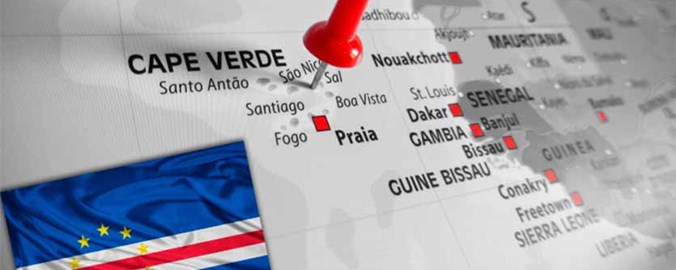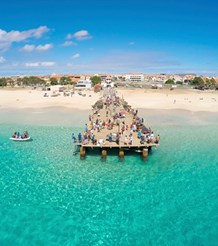
Tourists Flock to Cape Verde in 2015
Cape Verde's National Statistics Institute (INE) reported a 2% annual increase in visitor numbers in the first half of 2015, putting the country on target for a bumper year for tourism.
In the first six months of the year, more than 278,000 visitors arrived on the beautiful archipelago off the northwest coast of Africa, attracted by its fabulous beaches known as jumping-off points for wind sports and a great location for diving among shipwrecks.
During the second quarter, Cape Verde hosted 116,200 tourists representing a 4.8% increase on the same period of 2014, despite the country's relatively under-developed tourism infrastructure. Overnight stays the first six months increased 3.5% to almost 1.8 million with hotels remaining the most popular type of accommodation for 87.3% of visitors to the tiny archipelago nation.
The data reveals that the second quarter of the year saw mostly British tourists arriving in Cape Verde, representing around 25% of international visitors. Brits holidayed for an average stay of 9 days, with the island of Sal as the most popular resort location, accounting for around 46% of overnight stays in hotel establishments.
Cape Verde is a former Portuguese colony and maintains close links with Portugal and the Eurozone. Special partnership status has been granted by the EU and in 2008 Cape Verde joined the World Trade Organisation. The country has improved significantly to achieve economic stability with plenty of potential for further growth, particularly through its tourist sector.
The country's democracy is one of Africa's most stable and Cape Verde was officially removed from the United Nations' list of Least Developed Countries in December 2007. The country's outlook has never been better according to the World Bank, recently reporting that 'good governance, sound macroeconomic management, trade openness and increased integration into the global economy, as well as the adoption of effective social development policies underpinned an impressive development trajectory'.
Around half of Cape Verde's 482,000 population lives on the biggest island, Santiago which is home to the capital city, Praia. Tourism is mostly concentrated on the island of Sal which has the country's only international airport one of 2 international airports capable of receiving charter flights from Europe. New and bigger international airports are scheduled to be opened in Santiago, San Vicente and Boa Vista, boosting residential property prices in those areas.
Almost every habitable island of the archipelago has new development in construction. Capital values are consequently rising by 10%-15% annually and yet property in Cape Verde is still very much a bargain at around €1,200-€1,650/m².
Despite the recent rise in visitor numbers, Cape Verde remains largely undiscovered to international travellers, despite its unique cultural vibe and breathtaking beauty. Data from the INE from 1997 shows that 45,000 visitor arrivals were recorded for the year compared with more than 500,000 expected in 2015, illustrating the country's massive rise in popularity among international travellers over the years.
Consequently, the archipelago has been overlooked by property investors and the market for holiday rentals is almost non-existent. A studio unit in popular Santa Maria is currently priced at around €81,000 which would offer a yield in the region of 8%-9%, according to local realtors.
The ten archipelago islands of Cape Verde are clustered 280 miles off the coast of Africa, approximately one hour south of the Canary Islands. Notable for its vibrant blend of Portuguese and African cultures the country is also blessed with long stretches of fine white sandy beaches and an all year round perfect temperature of between 25 and 34 degrees.
With booming tourism and discounted real estate, it won't be long before investors zoom in on Cape Verde's bountiful property market. For investors seeking a lower entry level property purchase, there are investment opportunities in the country's hotel sector currently attracting interest among buyers of income generating assets, starting from as little as €10,000.






